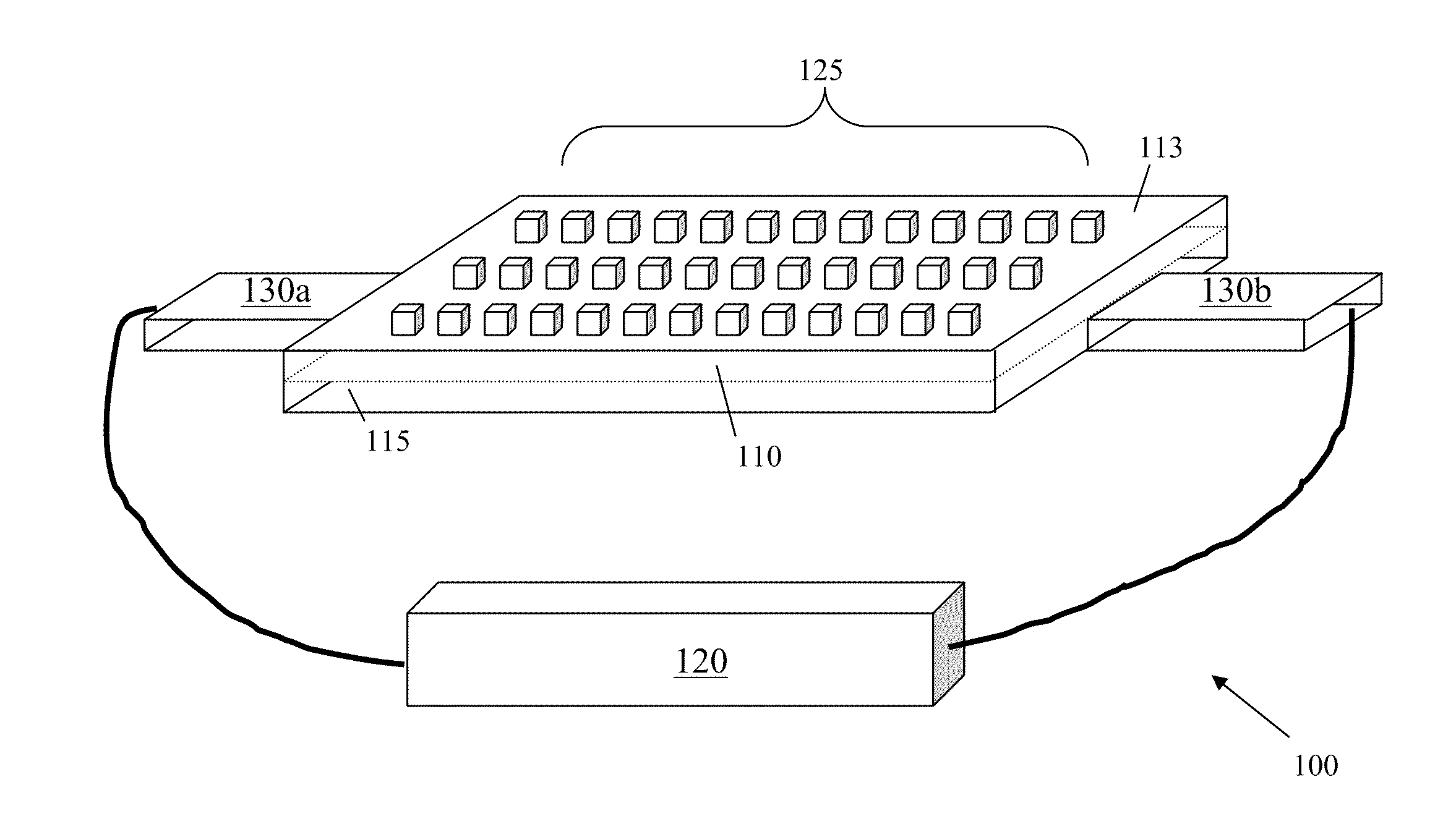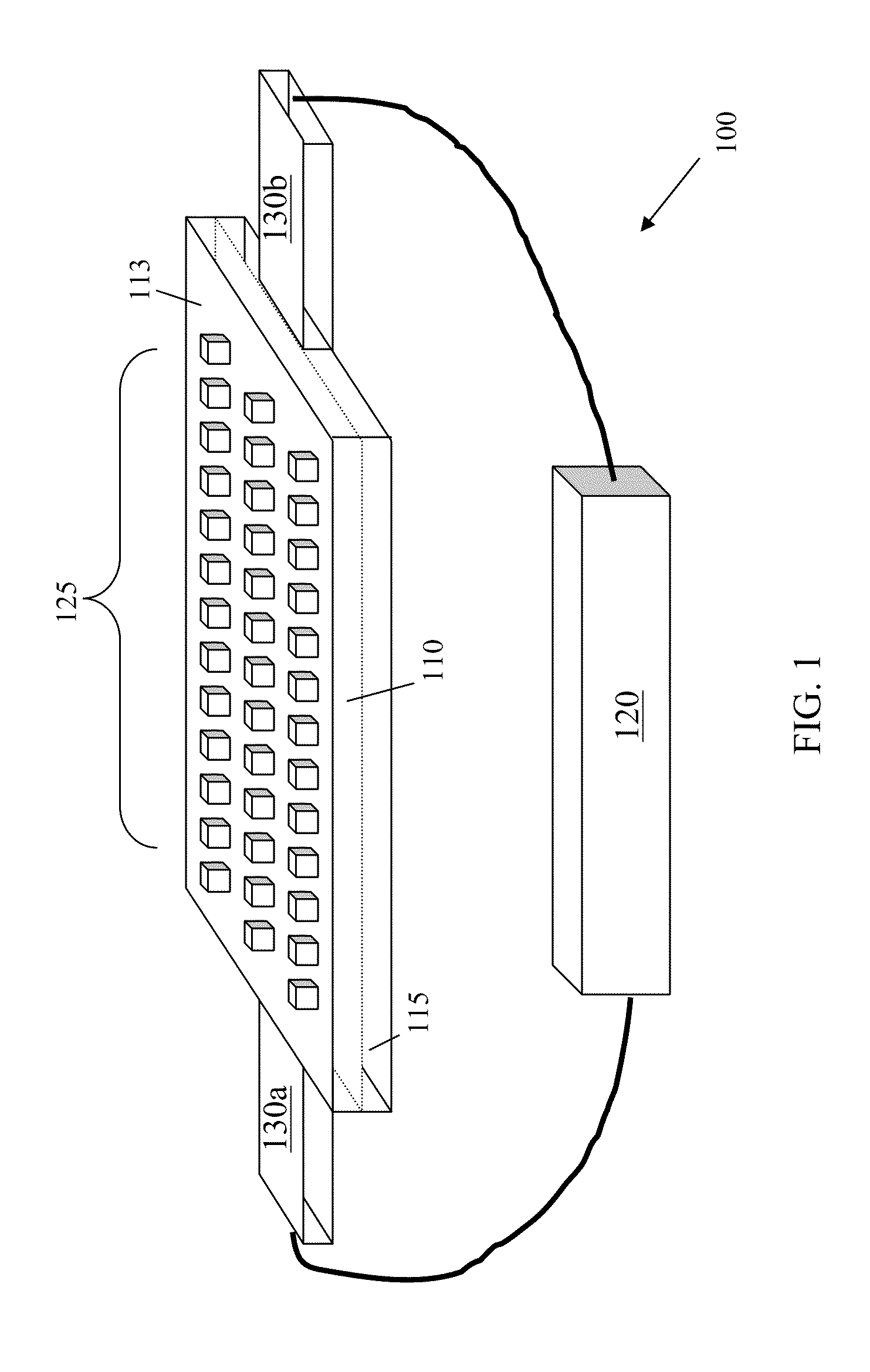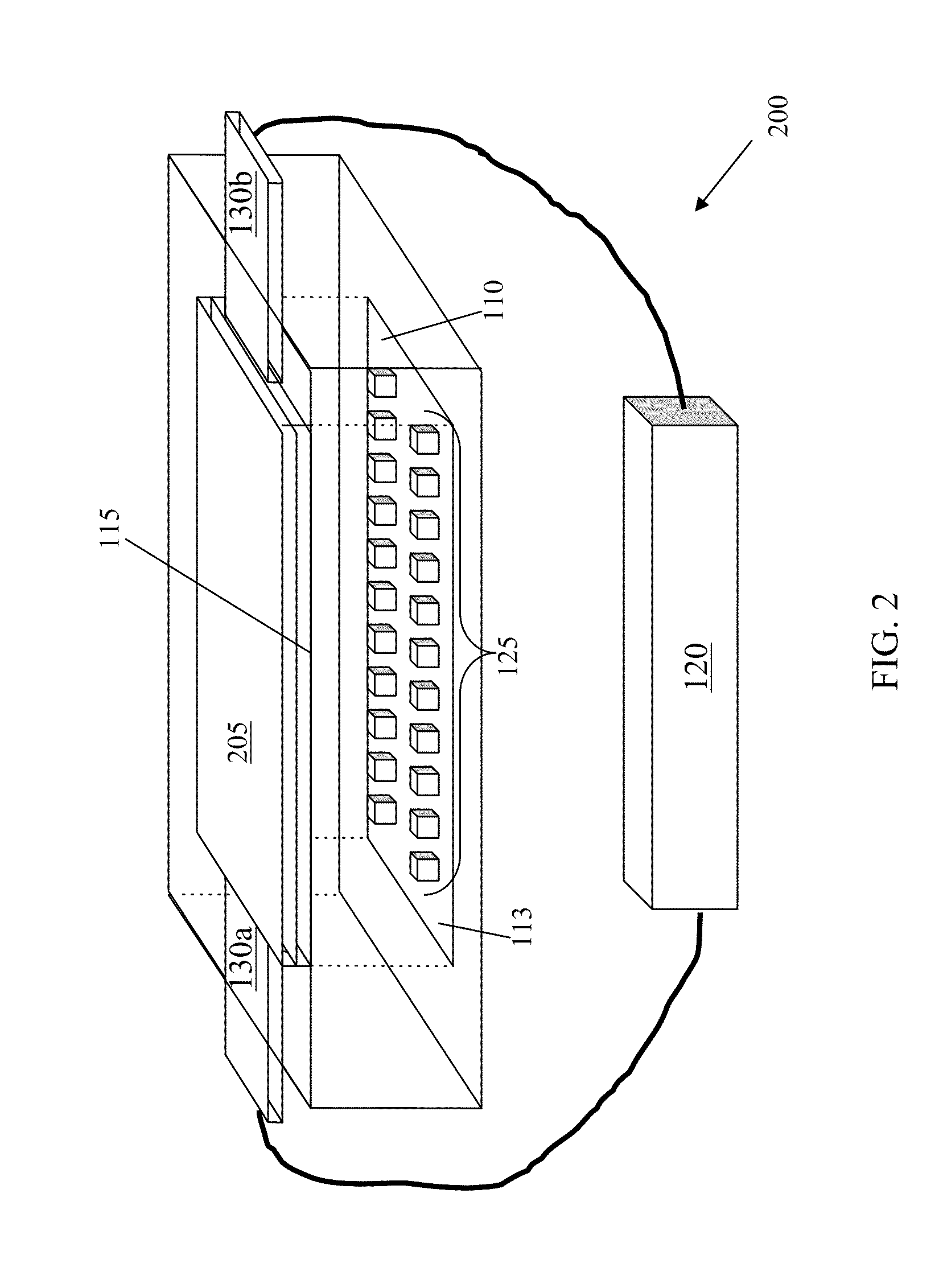Microelectromechanical system with reduced speckle contrast
a micro-electromechanical and contrast technology, applied in the field of micro-electromechanical systems with reduced speckle contrast, can solve the problems of reducing affecting the quality of the projected image, and random interference of laser light rays, so as to achieve superior quality and reduce the effect of speckle contras
- Summary
- Abstract
- Description
- Claims
- Application Information
AI Technical Summary
Benefits of technology
Problems solved by technology
Method used
Image
Examples
Embodiment Construction
[0014]The following embodiments of MEMS systems with reduced speckle contrast can be incorporated into or used with image projection systems. An image projection system can include a laser, shaping optics, a reflecting unit, and / or a screen. For example, the laser can project visible light, optionally shaped by shaping optics, onto the MEMS system. As the MEMS system is rotated along one or more axes, the system reflects the laser light over an angular range to project an image. In some image projection systems, the MEMS system directly projects the image onto an external surface, such as a wall. For image projection systems with reflecting units and / or screens, the reflecting unit can redirect the image from the MEMS system onto an external surface or a screen.
[0015]FIG. 1 depicts an exemplary embodiment of a MEMS system 100 with reduced speckle contrast. The system 100 includes a substrate 110 with a reflective surface 113, an elastic substance 115, and an energy source 120. Micro...
PUM
 Login to View More
Login to View More Abstract
Description
Claims
Application Information
 Login to View More
Login to View More - R&D
- Intellectual Property
- Life Sciences
- Materials
- Tech Scout
- Unparalleled Data Quality
- Higher Quality Content
- 60% Fewer Hallucinations
Browse by: Latest US Patents, China's latest patents, Technical Efficacy Thesaurus, Application Domain, Technology Topic, Popular Technical Reports.
© 2025 PatSnap. All rights reserved.Legal|Privacy policy|Modern Slavery Act Transparency Statement|Sitemap|About US| Contact US: help@patsnap.com



